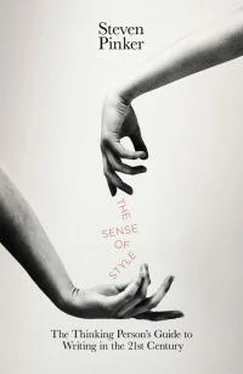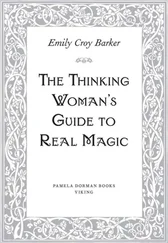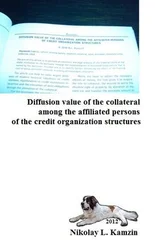Many purists claim that singular they is a LOLcat-worthy grammatical howler which is tolerated only as a sop to the women’s movement. According to this theory, the pronoun he is a perfectly serviceable gender-neutral pronoun; as grammar students used to be taught, “The masculine embraces the feminine, even in grammar.” But feminist sensibilities could not abide even the illusory sexism of using a masculine form to represent both genders, and so they engaged in a campaign of linguistic engineering that started with a mandate to use the clumsy he or she and slipped down a slope that ended in singular they . The computer scientist David Gelernter explains: “Unsatisfied with having rammed their 80-ton 16-wheeler into the nimble sports-car of English style, [feminist authorities] proceeded to shoot the legs out from under grammar—which collapsed in a heap after agreement between subject and pronoun was declared to be optional.” 48(He should have written “antecedent and pronoun”—the issue has nothing to do with subjects.)
The webcomic artist Ryan North addresses the same usage problem with a lighter touch and no hostility toward feminism. One of his creations, T-Rex, is more skeptical than Gelernter about how nimble English really is, and confronts the language in the second person, asking it to admit one of the gender-neutral pronouns that have been proposed over the years, such as hir, zhe, or thon:

But in a subsequent panel in this strip, the talking dinosaur equivocates, first worrying that “invented pronouns always sound strange,” and then reversing himself and wondering whether he should learn to like There comes a time when thon must look thonself in the mirror .
Let’s try to sort this out. To begin with, T-Rex is right and the purists are wrong: English has no gender-neutral pronoun. At least in grammar, the masculine does not embrace the feminine. Experiments have shown that when people read the word he they are likely to assume that the writer intended to refer to a male. 49But the experiments hardly needed to be run, because it’s a brute fact of English grammar that he is a masculine and not a common-gender pronoun. If you don’t believe it, just read these sentences: 50
Is it your brother or your sister who can hold his breath for four minutes?
The average American needs the small routines of getting ready for work. As he shaves or pulls on his pantyhose, he is easing himself by small stages into the demands of the day.
She and Louis had a game—who could find the ugliest photograph of himself.
I support the liberty of every father or mother to educate his children as he desires.
Do you still think that he is gender-neutral? It’s hard to disagree with T-Rex’s accusation that there is a bug in the English language. It would seem that a writer who wants to embrace both sexes in a quantified sentence must either make an error in number by writing No American should be under a cloud of suspicion because of what they look like or make an error in gender by writing No American should be under a cloud of suspicion because of what he looks like. And as the dinosaur explained, other solutions— it, one, he or she, s/he, his/her, novel pronouns like thon —have problems as well.
One theoretical possibility is no longer an actual possibility: blow off concerns with gender inclusiveness, use masculine terms, and let the reader read between the lines and infer that women are included, too. No major publication today will allow this “sexist usage,” nor should they. Quite aside from the moral principle that half of humanity should not be excluded from generic statements about the species, we now know that the major objections to nonsexist language that were first voiced forty years ago have been refuted. Not only have the grace and expressiveness of the English language survived the substitution of gender-neutral terms for masculine ones ( humanity for man, firefighter for fireman, chair for chairman, and so on), but the generation of readers that has grown up with the new norms has turned the traditionalists’ startle reaction on its head. Today it is sexist usage that stops readers in their tracks and distracts them from the writer’s message. 51It’s hard, for example, not to cringe when reading this sentence from a famous 1967 article by a Nobel laureate: “In the good society a man should be free … of other men’s limitations on his beliefs and actions.” 52
This brings us back to the solution of singular they. The first thing to realize about the usage is that it is not a recent contrivance forced on writers by militant 1970s feminists. Gelernter pines for “Shakespeare’s most perfect phrases” and Jane Austen’s “pure simple English,” but this turns out to be a pratfall of slapstick proportions, because both writers were exuberant users of—you guessed it—singular they. Shakespeare used it at least four times, and in a paper entitled “Everyone Loves Their Jane Austen,” the scholar Henry Churchyard counts eighty-seven instances in her works, of which thirty-seven were in her own voice rather than her characters’ (for example, “Every body began to have their vexation,” from Mansfield Park ). 53 Chaucer, the King James Bible, Swift, Byron, Thackeray, Wharton, Shaw, and Auden also used the form, as did Robert Burchfield, editor of the Supplement to the Oxford English Dictionary and the most recent edition of Fowler’s Modern English Usage.
A second thing to understand about singular they is that even though it offers a handy solution to the need for a gender-free pronoun, that is not its only or even its primary appeal. Many writers use it even when the gender is unambiguously male or female. George Bernard Shaw, for example, wrote the lines “ No man goes to battle to be killed. ” “ But they do get killed .” Since the dialogue was about men, Shaw had no need to pander to feminism, but he used singular they anyway, because the supposedly correct form with he would have turned the exchange into hash: “ No man goes to battle to be killed. ” “ But he does get killed. ” (The same is true for a sentence I used two paragraphs ago: No major publication today will allow this “sexist usage,” nor should they. The alternative nor should it would make it sound as if I had a particular publication in mind and raise the question “Nor should which?”) A contemporary example with an unambiguous female referent comes from a spoken interview with Sean Ono Lennon in which he specified the kind of person he was seeking as a romantic partner: “Any girl who is interested must simply be born female and between the ages of 18 and 45. They must have an IQ above 130 and they must be honest.” 54 Once again he did not need they as a gender-neutral pronoun; he had already stipulated the congenital and current sex of his desired mate (nowadays perhaps you have to specify both). But since he was speaking not of an individual female but of the entire pool, they felt right to him. In each of these cases they takes part in a kind of notional agreement. No man and any girl are grammatically singular but psychologically plural: they pertain to classes with many individuals. The mismatch is similar to the one we saw in examples like None are coming and Are any of them coming?
Indeed, “singular they ” is a misnomer. In these constructions, they is not being used as a singular pronoun being wrenched into agreement with a singular antecedent like each dinosaur, everyone, no American, the average American, or any girl . Remember when we tried to sort descriptions of objects into piles for “one” and “more than one”? We discovered that the very idea of the numerosity of a quantified expression like nothing or each object is obscure. Does no American refer to one American or to many Americans? Whom knows? 0 ≠ 1, but then 0 ≯ 1 either. This indeterminism forces us to realize that the word they in the sentences we have been considering does not have the usual semantics of a pronoun and an antecedent, as it does in The musicians are here and they expect to be fed. Rather, the pronoun they is functioning as a bound variable: a symbol that keeps track of an individual across multiple descriptions of that individual. So-called singular they really means “ x ” in an expression like “For all x, if x is an American, then x should not be under a cloud of suspicion because of x ’s appearance,” or “For all x, if Sean Ono Lennon considers marrying x, then x is born female & x has an IQ above 130 & x is honest.” 55
Читать дальше













